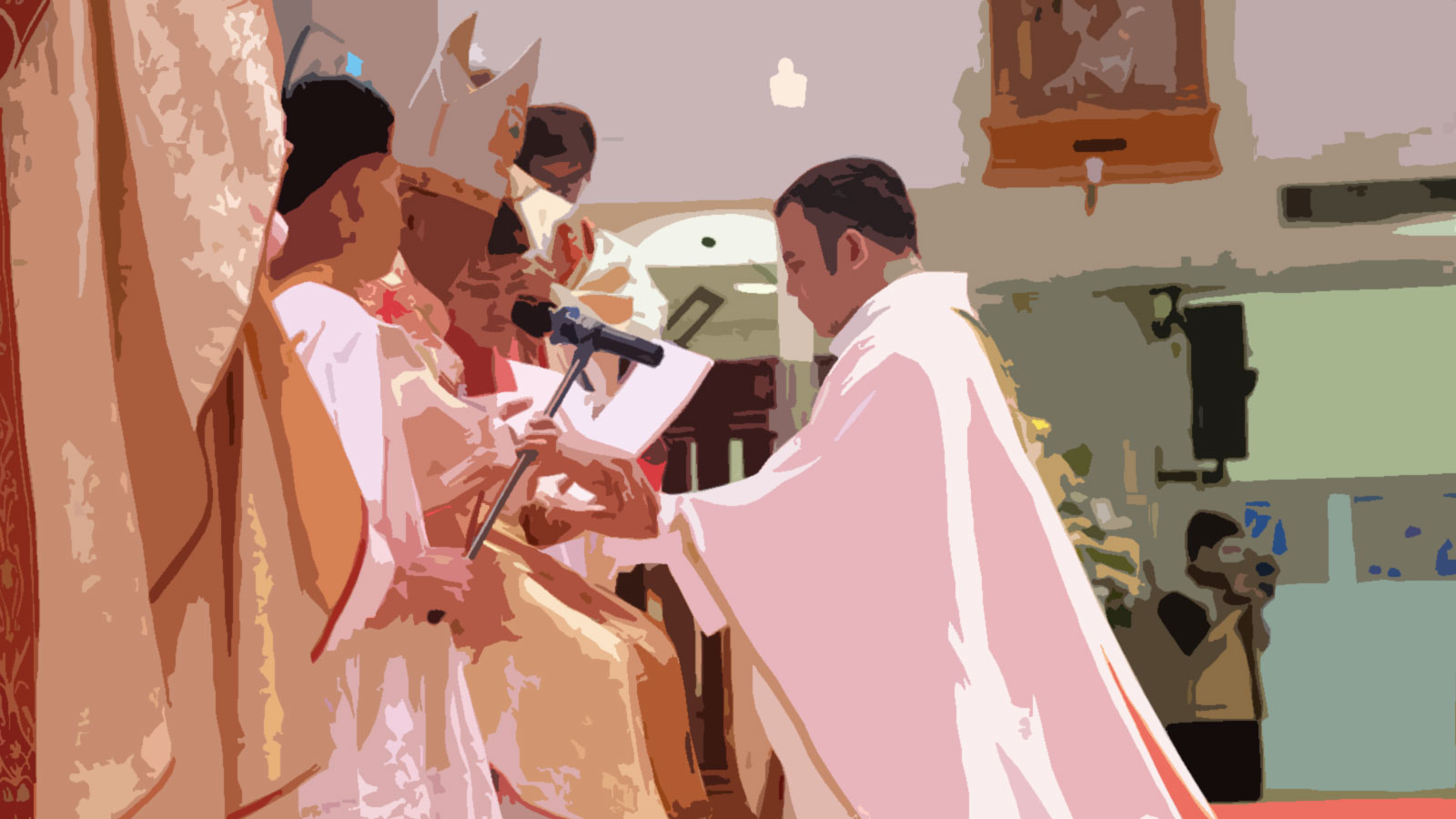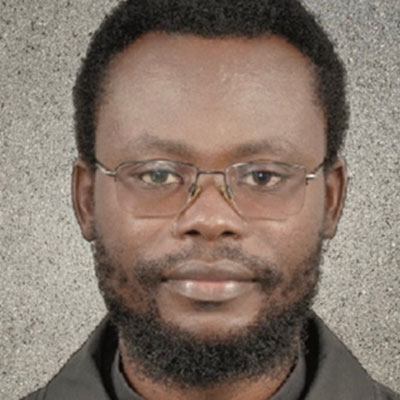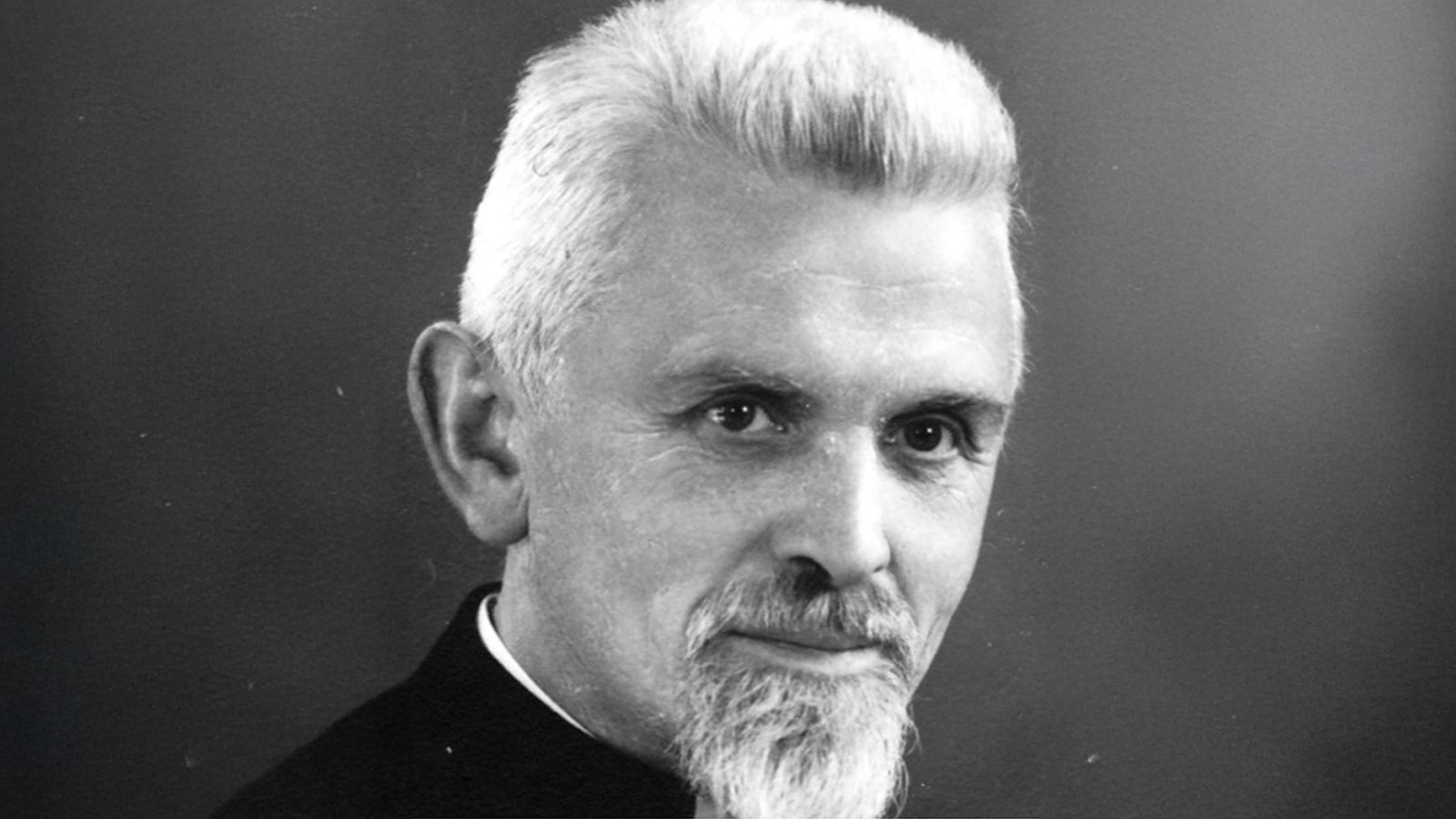
Fr. Celso Tabalanza, cicm
Missionary in the USA
The General Government asked Andre Kazadi and me to make an ocular visit to the Diocese of Gaspé. We sought information on the missionary challenges and how the Congregation can respond to them.
The 16th General Chapter declared the following: "Following in the footsteps of Théophile Verbist, our Founder, and our precursors, the General Chapter, aware of the missionary nature of our Congregation, encourages all confreres and entities to respond to new missionary calls in our world, both within our Provinces and in other countries."
In 2024, the Congregation responded to Bishop Claude Lamoureux of the Diocese of Gaspé, Quebec, Canada's invitation to send CICM missionaries to Canada.
The History of the Diocese of Gaspé, Quebec, Canada
The city of Gaspé is considered the birthplace of Canada. It is at the tip of the Gaspé Peninsula. This used to be the village where the explorer Jacques Cartier planted a cross in the name of the King of France, Francois I, in 1534, eventually leading to New France's colonization. The most common assumption is that Gaspé may come from the Mi'kmaq word Gespeg, which means "land's end."
Pope Pius XI erected the Diocese of Gaspé on May 5, 1922, and is a suffragan of the Archdiocese of Rimouski in Quebec, Canada. Including the Îles-de-la-Madeleine, the Diocese covers 20,637 km2 (7,968 square miles). Its territory includes the parishes of the Gaspé Peninsula, also known as Gaspesia, from Cap-Chat in the north to Restigouche in the south, as well as the parishes of Îles-de-la-Madeleine.
Jacques Cartier wanted to officially mark the French presence in America when he planted the cross. The ten-meter cross he planted bore the words "Long live the King of France." In 1604, French settlers from the southwestern and southeastern regions of France built the first French settlement in some parts of the northeastern region of North America called Acadia, followed by the founding of Quebec in 1608. Church records showed that in May 1659, Msgr. François de Laval, declared a saint by Pope Francis in 2014, visited Percé and confirmed some 140 young people and adults, both Native Americans and of European origin. This visit encouraged missionaries to establish several mission stations everywhere, which made them visit Native Americans and French Settlers.
In 1860, Msgr. Charles-François Baillargeon, administrator of the Diocese of Quebec, responded to a request from missionaries and erected the first parishes in Gaspésie. This marked the establishment of the Church in the Gaspé region, which contributed to its growth on the peninsula.

The photo shows a cross planted in 1934, commissioned by the Government of Canada,
to commemorate the 400th anniversary of the arrival of French explorers in Canada.
The original Cross of Gaspé was erected on July 24, 1534.
Statistics of the Diocese of Gaspé
The Diocese has a geographical area of 20237 square kilometers. In the 2021 Canadian census, the Gaspé Peninsula recorded a population of 89,342. Church records showed a Catholic population of 74,785. The Diocese has thirty-nine active diocesan priests, many of whom are up to retirement age, and fourteen are Fidei Donum from Benin. Forty-one priests serve sixty-three parishes, mainly along the coastline of the Gaspé Bay and the Gulf of St. Lawrence. The Diocese also serves two Mi'kmaq Indian missions. In addition, 80 female religious in the Diocese work in different ministries, most of whom are involved in hospital ministry. The people's means of livelihood are fishing, shipping, tourism, and wind power.
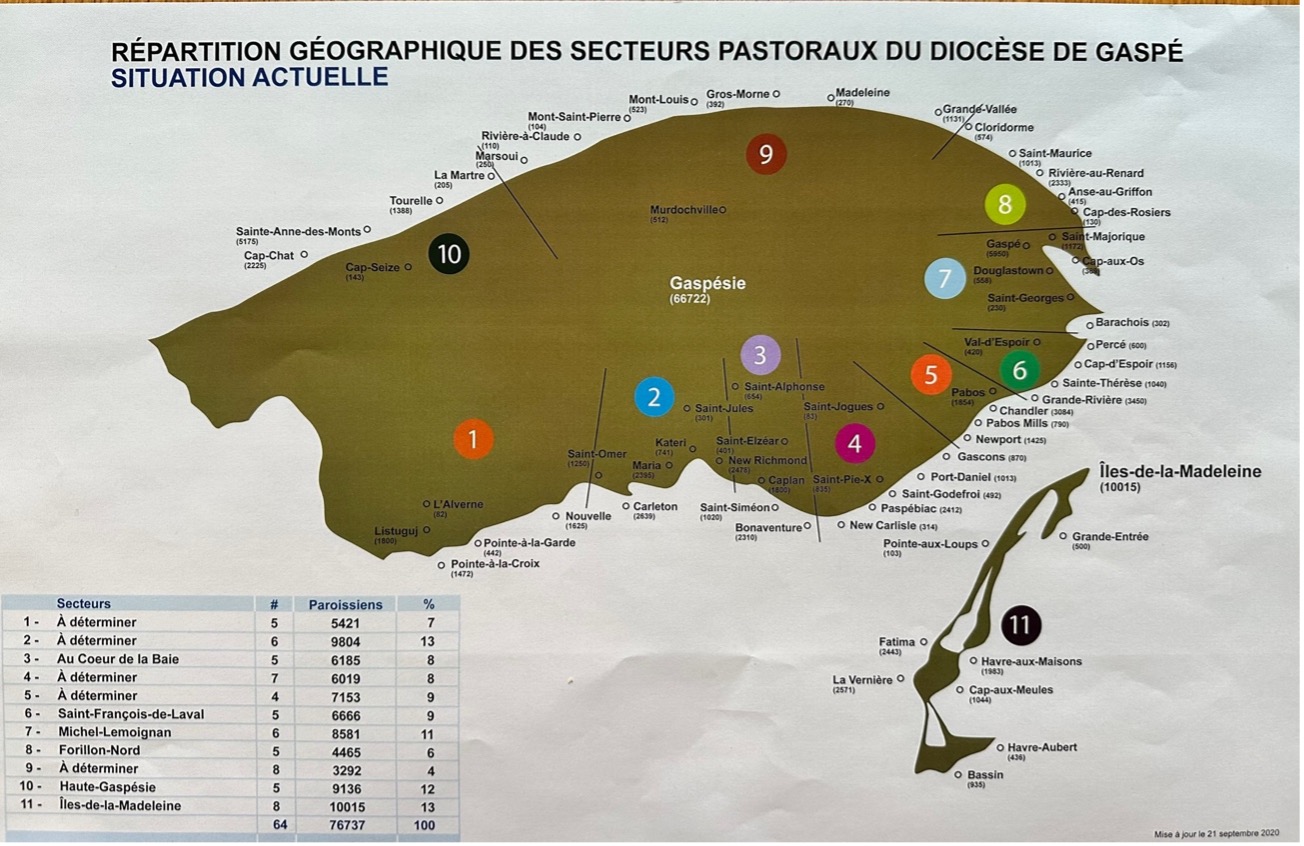
Some Missionary Challenges in the Diocese
The Diocese is divided into eleven Geographical Pastoral Sectors. In some dioceses, they are called deaneries. With only thirty-nine active priests, a large percentage nearing retirement age, and around fourteen are incardinated in other dioceses (Fidei Donum), this becomes a massive challenge for the Diocese. Consequently, some parish priests take pastoral care of two to three parishes. Bishop Lamoureux talked about building up the local churches and communities. With an aging local clergy and growing aging parishioners (32% of the population are above 65 years of age) and the geographical distances of parishes, the CICM missionary presence can re-invigorate and revitalize the evangelization work of the Diocese.
Unlike some of the CICM mission areas, the Diocese is blessed with many well-built churches, thanks to the efforts of the first- and second-generation missionaries. Some structures are well-maintained, while others have been abandoned due to structural engineering issues. Nevertheless, the maintenance of structures is different from what we have been invited to do nor where we need to be a "Congregation of the International Cement Mixers."
The CICM Missionary presence is asked to offer a renewed missionary spirit focusing on new evangelization. "The 16th General Chapter believes that new missionary foundations can also be understood as a new way of doing mission, which consists of being more creative in our current establishments, developing new forms of missionary presence among social categories to whom we have not yet reached out in our pastoral work. In this respect, the question of bringing a "CICM touch" to our parishes was raised: what distinguishes a CICM parish from a parish entrusted to the diocesan clergy or any other religious institute? The spirit of flexibility and missionary mobility are attitudes to be encouraged and promoted among confreres. Each Provincial Government should take care of this for greater vitality and effectiveness in the mission."
Our presence in the Diocese of Gaspé may re-propose the Gospel to the Faithful of the Diocese, especially to the youth and young adults. We were told that young adults usually leave the Gaspé Peninsula to go to colleges and universities in bigger cities. Therefore, the challenge is to offer the youth and young adults a solid formation so that they can bring their faith in Jesus Christ wherever they are. Thus, our missionary presence may form missionary discipleship that includes encounter, accompaniment, community, and missioning.
Gaspesia is visited by thousands of local and international tourists every year after a long winter season. Many of them go fishing. Others enjoy wilderness and full-service camping. Some go hiking and mountain trekking. Others enjoy sea excursions. CICM presence may creatively offer outreach and provide pastoral accompaniment to them and others "on the move," i.e., those who work in the Tourist Industry, National Parks, Tourist Centers, pilgrimage groups, cruise ships, migrant workers, and many others.
This list is incomplete. The new CICM Missionary Team, in dialogue with Bishop Claude Lamoureux, may be able to focus on one or two challenges that may not be in the list I cited. After all, CICM is at the service of the local Church. The Commentary of the CICM Constitutions reminds us that "we are not the masters of the mission nor the Christian communities or Churches, we are their servants. We always discern the type of service that they need. In this discernment, we dialogue with all those who assume a responsibility in the communities and the particular Churches."
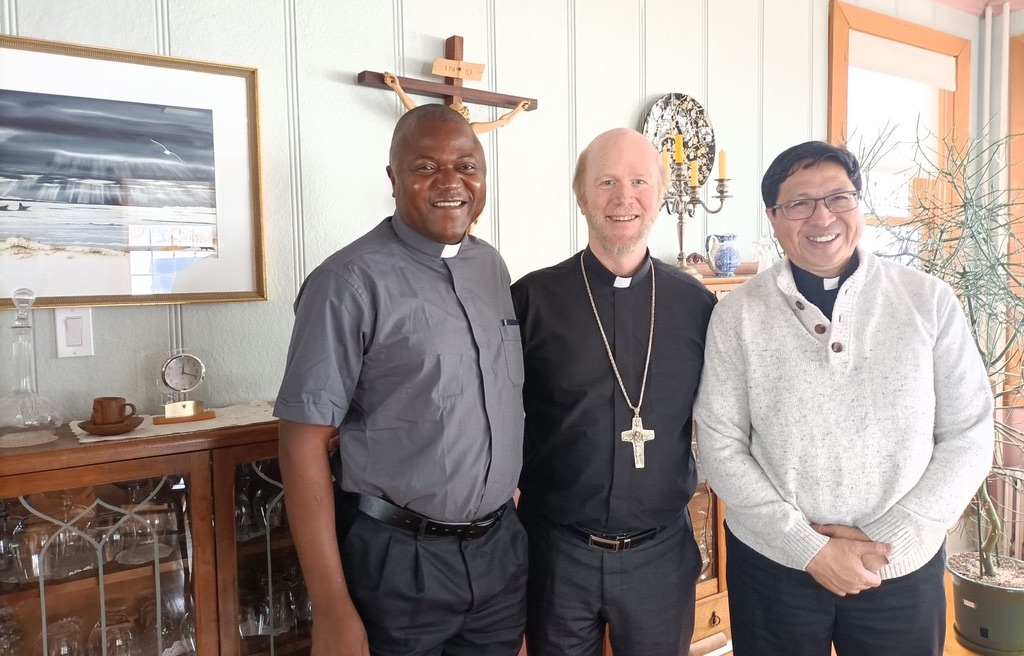
Fr. André Kazadi, Bishop Claude Lamoureux, and Fr. Celso Tabalanza in Gaspé, Canada
Gaspesia as a new missionary venture of the US Province
The question that some confreres asked was: Is Canada a new missionary foundation? After profound reflections, guided by Article 19.7, New Missionary Ventures in Vade mecum B for Provincial Administration, which states: "By New Missionary Ventures we understand the beginning of a new missionary experience, usually in a country where CICM is not presently working. The initiative for a New Missionary Venture can come from either the General Government, a Region, or a Province, usually due to an invitation from a particular Church or a perceived missionary need. It seems best to leave the implementation of the New Venture to a single Province with the General Government and the Region playing a supportive role in terms of personnel and finance." In consultation with the General Government, the US Provincial Government decided that implementing the new missionary venture in the Diocese of Gaspé, Quebec, Canada, should be left to the US province with the general government's support.
This missionary venture is also within the scope of the US Province's Mission Statement:
° We affirm the possibility of diverse ministries in response to the needs of the local churches.
° We will continue outreach to the non-baptized and unchurched.
° Our mission includes empowering the laity and making them missionary partners.
° One of our missionary projects is a commitment to developing missionary parishes.
With these in mind, I would not be surprised if the US Province would be renamed or called the Province of the United States and Canada.
I ask everyone to pray to the Holy Spirit, author and mover of mission, so that the seed of this new CICM missionary venture may fall on rich soil and produce fruit, a hundred or sixty or thirtyfold (Mt. 13:8). §
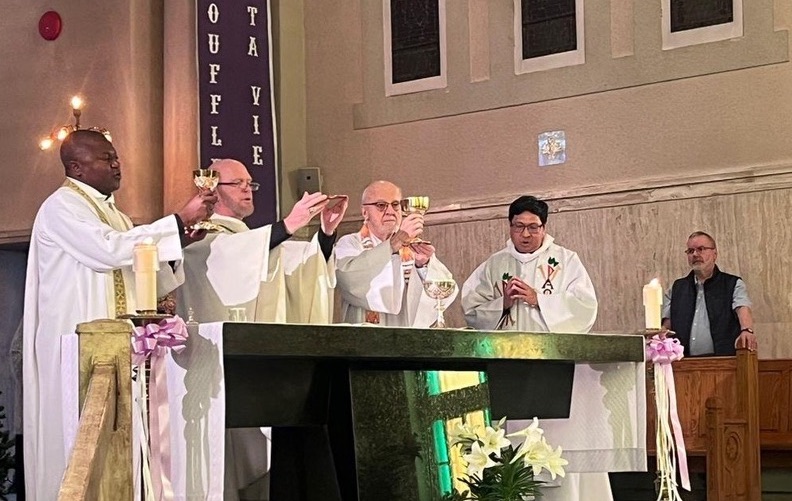
Fr. André Kazadi and Fr. Celso Tabalanza concelebrating Holy Mass
with Bishop Claude Lamoureux at the Church of Saint-Cœur-De-Marie,
Chandler, Quebec, Canada


